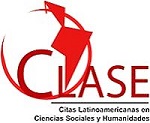Submissions
Submission Preparation Checklist
As part of the submission process, authors are required to check off their submission's compliance with all of the following items, and submissions may be returned to authors that do not adhere to these guidelines.- The submission has not been previously published, nor is it under consideration by another journal (or an explanation has been provided in the Comments to the Editor).
-
The submission file is in OpenOffice, Microsoft Word, RTF, or WordPerfect format.
- URLs for the references have been provided where available.
- The text is single-spaced; uses a 12-point font; italics are used instead of underlining (except with URLs); and all illustrations, figures, and tables are placed within the text at the appropriate points, rather than at the end.
- The text adheres to the stylistic and bibliographic requirements outlined in the Author Guidelines, which can be found in the "About the Journal" section.
- If you send it to a peer-reviewed section of the magazine, you must follow the instructions in Ensure anonymous evaluation.
Research Article
Document that presents, in detail, the results of an investigation.
Review Article
It corresponds to a publication, the product of extensive and sufficient bibliographic research, on a specific topic of interest to the target audience of the magazine.
Reflection Article
Document that presents results of an investigation from an analytical, interpretive or critical perspective of the author, on a specific topic, resorting to original sources.
Copyright Notice

This work is under international license Creative Commons Reconocimiento-NoComercial-CompartirIgual 4.0.
Privacy Statement
The names and email addresses entered in this journal site will be used exclusively for the stated purposes of this journal and will not be made available for any other purpose or to any other party.



















